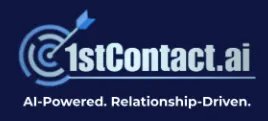
The Compliant Business Launch Roadmap: A Sequential Framework for Startup Maturity
I. Executive Summary: The Sequential Framework for Compliant Business Launch
Launching a new business requires a rigorous, phased approach where strict adherence to legal, financial, and technical prerequisites is paramount to mitigating risk and establishing long-term viability. This comprehensive roadmap, structured across the four defined phases (Ideation, Design, Development, and Launch/Deployment), emphasizes sequential compliance to ensure the venture is built upon a solid, defensible foundation.
The core strategic dependencies define the sequence of execution. The Legal Foundation (Entity Registration and Tax Identification) must be established before the Financial Infrastructure (Bank Accounts) can be operationalized. Likewise, the Technical Foundation (Website and Legal Policies) must be finalized before initiating the Digital Presence (Google Business Profile and Social Media Marketing). Attempting to bypass these prerequisites not only risks legal liability but also compromises brand integrity and wastes resources.
Two critical actions requiring long lead times must be initiated early in the Design phase: formal Trademark Filing and the development of robust, detailed Financial Projections.1 These steps ensure that intellectual property is protected while providing a realistic fiscal plan to guide resource allocation and attract potential investment.
II. Phase I: Strategic Ideation and Validation (Conceptual Foundation)
The Ideation phase focuses on confirming the viability and unique positioning of the business idea, establishing the non-negotiable groundwork before committing to legal formation costs. This phase transitions the concept from abstract passion to a preliminary, validated business hypothesis.
1. Foundational Business Concept and Passion Alignment
The first step involves a deep, introspective documentation of the founder’s individual strengths and weaknesses, alongside potential challenges they face.1 This self-assessment is essential for building a durable organization, as it helps identify necessary strategic partners or future hires who possess skills that cover the founder’s limitations. Concurrently, the process requires documenting core passions and translating them into potential business ideas, ensuring alignment between personal drive and market opportunity.1
Following the definition of core passions and competencies, the focus shifts to defining the financial mechanism—the monetization strategy.1 The business must clearly articulate how its service or product generates revenue. Examples include translating specialized knowledge into coaching services, or expertise in products into a testing company, or legal expertise into specific legal service offerings.1 This exercise immediately grounds the passion in fiscal reality.
2. Preliminary Market Validation and Analysis
To ensure the concept holds commercial merit, preliminary market research is required. This involves gathering initial competitive intelligence (CI) by actively monitoring similar businesses operating in the target space.1 This initial CI aims to understand existing customer success experiences within the industry and identify gaps in service or product offerings that the new business can exploit.
The analysis culminates in a conceptual Strengths, Weaknesses, Opportunities, and Threats (SWOT) assessment.1 Conducting this preliminary SWOT analysis helps test the durability of the hypothesis and guides subsequent planning efforts by identifying areas of potential fragility or strategic advantage.
3. Conceptual Legal Review (Prerequisite to Registration)
One of the most frequent and costly mistakes a new founder makes is rushing the legal registration without confirming the brand identity. The conceptual legal review mandates that a new, unique business name must be devised and vetted before any registration takes place.1 The vetting process includes checking state databases and performing a preliminary search to confirm the name’s availability and distinctiveness.
This preliminary vetting is crucial because if a founder rushes to register an LLC 1 without confirming name uniqueness, they risk registering a name that later fails federal trademark scrutiny or clashes with an existing entity, necessitating expensive re-registration or a complete, disruptive rebranding.
In parallel, the digital identity must be secured. This involves confirming the availability of the primary domain name and all necessary social media handles (e.g., the vanity URL).4 Securing these digital assets ensures brand consistency across all platforms and prevents domain squatting, which can otherwise force a costly brand pivot later in the Design phase, potentially derailing the Brand Guide creation.1 Identifying and securing intellectual property (IP) conflicts early is essential risk mitigation, ensuring the brand can grow unimpeded.
III. Phase II: Definitive Design and Legal Structuring (The Compliance Build)
Phase II is the transition from concept validation to legal existence and financial mobilization. It is strictly sequential, prioritizing regulatory compliance and liability protection through adherence to hard prerequisites.
1. Critical Legal and Financial Sequencing (The Hard Prerequisites)
The maintenance of the corporate liability shield depends entirely on the correct execution and sequencing of the following three steps:
1. Entity Formation (LLC Registration)
The process begins with the formal registration of the Limited Liability Company (LLC) or chosen entity with the Secretary of State or equivalent authority.1 This involves filing the Articles of Organization and appointing a Registered Agent. This step officially establishes the business as a legal entity separate from the founder, affording fundamental liability protection. During this process, the founder must also make note of any immediate compliance or regulatory requirements specific to the chosen state of formation.1
2. Federal Tax Identification (EIN Acquisition)
Once the entity is legally registered, the business must acquire its Employer Identification Number (EIN) from the Internal Revenue Service (IRS).1 The EIN is the unique federal tax identification number required for virtually all business operations, including hiring, filing taxes, and opening financial accounts.7 This step is a mandated prerequisite because the EIN application requires the legal name and details of the registered LLC.9 Attempting to skip this step often forces founders to use their personal Social Security Number (SSN) for business activities, which dangerously mixes personal and business tax identity, thereby undermining the legal foundation laid in the LLC registration phase.
3. Financial Infrastructure Setup
With the legal entity and its tax identity established, the financial infrastructure can be built. This involves opening dedicated Business Checking, Savings, and Credit Card Accounts.1 Banks are required by law to verify the business and its key executives, and therefore require the LLC formation documents (e.g., Articles of Organization or Certificate of Formation) and the EIN to open legitimate business accounts.9 Failure to adhere to this strict separation of personal and business funds risks the legal consequence known as "piercing the corporate veil," nullifying the LLC’s liability protection. Initial funding for the business checking account should also occur, typically allocating three months of projected operating capital.1 Finally, opening a low-limit business credit card is essential for commencing the process of building an independent business credit history.1
2. Financial Strategy, Budgeting, and Risk Management
Financial discipline begins with the creation of a detailed business budget that incorporates operational expenditures, capital costs, and comprehensive projections for spending, sales, and cash flow covering at least the first 12 months of operation.1
A key recommended financial management technique for solopreneurs and small firms is the implementation of the 33/33/33 Cash Flow Approach.1 This cash management model suggests dividing all incoming revenue into three main accounts: one-third allocated for
Taxes (reserved for estimated quarterly payments), one-third for Operating Expenses (covering tools, office costs, etc.), and the remaining third for Owner’s Pay.13 This model ensures that the necessary funds for tax obligations are separated proactively, significantly simplifying future compliance and mitigating the risk of large, unexpected tax burdens.13
It is imperative to distinguish this cash flow approach from equity distribution. Multiple analyses strongly caution founders against automatically splitting ownership 33/33/33 among co-founders.14 While conceptually simple, an even equity split rarely reflects the reality of varying founder contributions—such as capital invested, time commitment, or expertise brought to the table. Utilizing an equal split for ownership can lead to future conflicts, deter sophisticated investors, and undermine team commitment. Founders must formalize a dynamic equity model, based on actual or projected contribution levels, outlined in a written founder agreement.14
3. Brand Identity and Intellectual Property Protection
Building a strong, recognizable brand starts with the development of a comprehensive Brand Guide.1 This guide defines the visual identity, including logos, templates, fonts, and color theory, ensuring consistency across all future marketing and customer touchpoints.
Crucially, intellectual property (IP) protection must commence in this phase. The formal Trademark (TM) registration process should be initiated immediately, often via an Intent-to-Use filing if the product or service is not yet active in commerce.1 This step is critical because federal TM review is a lengthy process, spanning many months.2 Filing early ensures that IP protection is in motion long before the public launch, securing brand assets. Furthermore, a strategy for copyrighting website content and unique business materials should be planned, as formal registration is necessary for enforcing rights, even though copyright is automatic upon creation.1
4. Sales and Product Definition
The design phase solidifies the market offering. This involves devising the definitive list of Products or Services, determining their pricing structures, and establishing the foundational customer value proposition.1 The overall business plan must be drafted, detailing the mission, vision, and founder’s story.1 To generate early customer traction, an "unbelievable offer" or lead magnet, such as a free e-book or foundational resource, should be developed for deployment in the subsequent phase.1
IV. Phase III: Operational Development and Digital Readiness (The Execution Engine)
Phase III converts the legal and financial structures into a fully functioning, compliant operation ready for market entry. The emphasis is on building the digital architecture and strategically generating essential social proof.
1. Technical Foundation and Legal Compliance Integration
The prerequisite technical foundation begins with the setup of website hosting and the finalization of the website design, including contact forms, registration processes, and overall user experience.1 The website serves as the central hub for the business.20
A non-negotiable step immediately following website deployment is the integration of legal compliance documents. Comprehensive legal pages, including Terms and Conditions, Refund Policies, and a detailed Privacy Policy, must be developed and published.1 This is not merely a formality; it is a critical prerequisite for any online operation that collects user data. The Privacy Policy must be exhaustive, detailing categories of data collected, the purpose and duration of processing, how data is safeguarded, and the specific rights of users, such as the right to access, correct, or delete their personal data.22 For businesses handling information from jurisdictions like California or the EU, the policy must explicitly detail compliance mechanisms for CCPA/CPRA and GDPR, including opt-out mechanisms and processes for handling "Do Not Sell" requests.23
This legal document integration must occur before the activation of any marketing tools (CRM, drip campaigns, analytics) that capture user data. Deploying lead-capture forms or integrating customer relationship management (CRM) software without a live, compliant Privacy Policy exposes the business to immediate regulatory and legal risk, thereby establishing data privacy as a critical technical blockade that must be cleared prior to activating the digital marketing stack.
Once the legal framework is secure, core technical tools are integrated. This includes purchasing and setting up the CRM tool, a payment collection tool (e.g., Stripe), and ensuring all are connected to the accounting software (QuickBooks).1 Additionally, prospect collection is prioritized through the setup of registration, contact us, and other necessary forms.1
2. Digital Marketing Sequencing and Pre-Launch Momentum
The marketing strategy mandates building organic social proof before engaging in high-visibility, costly advertising. This is enforced through strict sequential steps:
1. Foundational SEO and Analytics
Initial search engine optimization (SEO) Keyword Analysis should be performed.1 Simultaneously, the setup of Google Analytics, tagging, and Search Console must be completed. These tools provide the necessary baseline data infrastructure to measure website traffic and user behavior once marketing begins.
2. Social Media Profile Setup
Relevant social media pages (LinkedIn, Facebook, Instagram) should be created.1 Selection of platforms should align with the target audience.5 Each profile must be completed using the verified business name, the primary website URL, and a detailed, branded bio or description.6
3. Google Business Profile (GBP) Activation
The Google Business Profile (GBP) is essential for local search visibility and is activated only after the website and branding elements are secure. The GBP listing must be created and verified.1 The profile must accurately reflect the business as consistently represented in the real world (e.g., across signage and stationery), and must include an accurate address or service area.25 The established, functional website URL and consistent branding must be in place first, as the website serves as the authoritative source of business information.20
4. Pre-Launch Review Accumulation
A goal of acquiring approximately 30 reviews is set at this stage to build initial social proof, which significantly increases consumer trust and perceived professionalism upon launch.1 This is achieved by setting up a review management tool and implementing an ethical solicitation strategy.1 The business must ethically solicit reviews from early contacts, friends, family, and participants in the beta testing or free service programs.1 Adherence to Federal Trade Commission (FTC) guidelines is mandatory; reviews must be sourced from genuine customers who have used the product or service, and offering incentives for positive reviews is explicitly prohibited as it injects bias and taints results.27
5. Social Media Follower Growth
The target of achieving 500 or more followers is established to present a professional, engaged image before engaging in mass marketing.1 This is achieved through the development of a focused content calendar that utilizes engaging formats like short video content (Reels) and teasers about the upcoming product or service.29 Existing professional contacts and colleagues should be invited to follow the pages to rapidly build this critical mass of initial followers.1
3. Operational Maturity and Vetting
To prepare for scaling, initial Standard Operating Procedures (SOPs) must be crafted for core functions, such as service delivery and lead handling.1 Product prototyping or beta testing is essential, where free services or products are offered to a small group to gather critical, real-world feedback.1 This beta process directly feeds into the review accumulation step.
Furthermore, a Vendor Management Framework must be established. This involves a systematic approach to managing third-party relationships, ensuring that sourcing activities identify the correct vendors, followed by rigorous risk assessment and due diligence before contracting and onboarding.1 This proactive management throughout the vendor lifecycle controls costs, manages supply chain risk, and ensures operational continuity.32
V. Phase IV: Market Launch and Initial Post-Launch Scaling (Deployment and Momentum)
Phase IV is the official transition to market presence, requiring the formal launch of sales activities and the deployment of advanced operational resilience mechanisms.
1. Launch Readiness and Go-to-Market
Launch preparation requires finalizing the sales strategy, which includes writing a comprehensive sales plan, developing a sales script, determining techniques for negotiation and pricing, and establishing a customer referral incentive system.1
The actual launch is marked by preparing a formal launch message, selecting a definitive "go live" date, and communicating the launch to family and friends.1 Initial marketing execution commences with a consistent content schedule, such as blogging twice a week, setting up auto-posting, and promoting developed lead magnets or downloadable resources.1 Concurrently, the business must start actively engaging in selling, joining relevant networking and event groups to build professional connections and generate early leads.
2. Advanced Risk Mitigation and Operational Resilience
Achieving operational maturity requires formalizing processes to protect the business against disruptions, failures, and compliance breaches.
Business Licensing and Compliance
All necessary federal, state, and local business licenses and permits specific to the industry and jurisdiction must be finalized and acquired. This ensures full legal clearance for commercial activity.
Business Continuity Planning (BCP)
A formal Business Continuity Planning (BCP) document is critical for ensuring survival during unforeseen emergencies.1 Developing a BCP involves establishing an emergency preparedness team and identifying essential services and functions that must be maintained during a disruption.33 The plan must detail emergency response procedures, include a crisis communication strategy (using email, phone, and social media alerts) 35, and integrate a formal Disaster Recovery Protocol (DRP) for technology and data.1 Data backup procedures and IT support plans must be finalized to support the DRP.1
Cybersecurity and Data Privacy Audit
Beyond basic security, explicit steps must be taken to address specific data privacy requirements (such as GDPR or CCPA).1 This requires implementing robust practices like privileged account setup using password information management (PIM) tools to time-delay or request passwords, thereby protecting critical systems. For digital portals, block box or white box testing (Penetration Testing) should be considered to proactively identify and remediate security vulnerabilities.1
Personnel and Operations
The strategy for scaling human resources must be defined, specifically clarifying the use of W2 employees versus 1099 contractors, and understanding the associated employment law requirements and the necessity of worker's compensation insurance if employees are hired.1 Protocols for vendor management, outsourcing criteria, quality management processes, and customer onboarding must also be formalized in this phase.1
3. Post-Launch Monitoring and Refinement
Upon launch, the focus shifts to quantitative measurement and iterative improvement. Key Performance Indicators (KPIs) must be determined to track success across sales, marketing, and operations.1 The business must commit to a continuous feedback loop, utilizing data gathered from customer interactions and beta testing to drive continual service improvement and innovation.1
Competitive intelligence gathering should be repeated immediately post-launch to gain real-world market insights.1 This refined information allows the marketing plan and business plan to be rapidly adjusted based on actual performance and market dynamics.1
Finally, if external funding is a long-term goal, the business plan must be refined specifically for investors, detailing financial projections, market opportunities, and outlining the potential pitfalls associated with different forms of external investment.1 The founder should also develop a concise, compelling elevator pitch for rapid communication of the business value.1
VI. Strategic Continuance and Advanced Operational Considerations
Compliance and quality assurance are not one-time events but ongoing processes that define a mature business. The final stage of this roadmap involves establishing the operational governance necessary for sustained growth and risk management.
1. Sustained Compliance and Legal Governance
Compliance must transition into a continuous maintenance schedule. An Annual Compliance Calendar/Checklist must be established to schedule regular legal audits and ensure all yearly regulatory obligations are met.1 A formal
Record Retention Policy is necessary to define how long and in what manner business records, including consent data collected through digital assets, must be kept.1 For businesses expanding into multiple states, adherence to state-specific compliance requirements is mandatory.1
2. Technology and Data Management
Maintaining a secure and reliable technology infrastructure is essential. This includes documenting the entire Technology Stack (software, systems, configuration) and implementing protocols for Software License Management.1 Data resilience requires formalizing
Data Backup Procedures and establishing a clear IT Support Plan.1 Furthermore, a
Mobile Device Management (MDM) Policy must be instituted to enforce security guidelines for company-owned or personal devices used for work, mitigating cybersecurity risk associated with remote access.1
3. Customer Service and Service Level Agreements (SLAs)
Operational quality is formalized through customer service structures. Businesses must define formal Service Level Agreements (SLAs) that set expectations for service delivery and outline a comprehensive Customer Complaint Resolution Process.1 To measure and ensure service quality, tools for
Customer Satisfaction Measurement should be deployed, alongside clear Refund and Return Policies.1
4. Exit Strategy and Business Valuation
Even in the earliest stages, planning for eventual transition is vital, particularly for attracting serious investors. This involves establishing a clear Business Valuation Process for determining the financial worth of the entity.1 Preliminary documentation related to an exit strategy should commence, including business succession planning, asset disposal procedures, and the formal procedures for IP Transfer.1
Conclusion and Recommendations
The compliant business launch framework requires rigid adherence to sequencing to ensure legal protection and maximized marketing efficiency. The core conclusion derived from this analysis is that legal and technical preparation must act as prerequisites to market execution. Skipping foundational steps, such as initiating data collection without a published, compliant Privacy Policy, or opening financial accounts before obtaining an EIN, introduces unnecessary structural fragility and legal jeopardy.
The primary recommendations are:
Enforce the Legal-Financial-Technical Sequence: Mandate the strict order of LLC Registration EIN Acquisition Business Bank Account Opening Website Legal Pages Publication Google Business Profile Activation. This sequence is the most effective method for liability protection and audit readiness.
Prioritize Pre-Launch Social Proof: Commit resources to achieving the 30 ethical reviews and 500+ follower goals during the Development phase. This leverages the beta testing period to generate organic momentum, significantly improving the efficacy and return on investment (ROI) of subsequent paid marketing campaigns.
Institutionalize Operational Resilience: Immediately implement the Business Continuity Plan (BCP) and the Vendor Management Framework post-launch. These steps transition the business from a reactive startup to a proactive, mature operation capable of sustaining growth against unexpected operational challenges or supply chain failures.
Adopt the 33/33/33 Cash Flow Model: Implement the three-bucket allocation system for cash flow management to ensure tax liability and operating expenses are consistently covered, providing immediate financial stability and compliance readiness. Simultaneously, ensure co-founder equity is determined using a dynamic model based on contribution, not merely an equal split.
Works cited
The Interest to Income Program.xlsx
Trademarks Registration Toolkit - USPTO, accessed October 2, 2025, https://www.uspto.gov/sites/default/files/documents/TM-Registration-Toolkit.pdf
6 steps to create your company's financial plan - BDC, accessed October 2, 2025, https://www.bdc.ca/en/articles-tools/money-finance/manage-finances/6-steps-to-create-your-companys-financial-plan
Intellectual Property Checklist for Start-Up Jon M. Garon, accessed October 2, 2025, https://www.law.nova.edu/clinics/boot-camp-handout-on-ip-and-tech.pdf
Social Media Setup Checklist - LiveAgent, accessed October 2, 2025, https://www.liveagent.com/checklists/social-media-setup-checklist/
The Ultimate Social Media Setup Checklist - Raven Tools, accessed October 2, 2025, https://raventools.com/socialchecklist/
Legal requirements for starting a business: A checklist - Wolters Kluwer, accessed October 2, 2025, https://www.wolterskluwer.com/en/expert-insights/business-startup-checklist
Checklist for starting a business | Internal Revenue Service, accessed October 2, 2025, https://www.irs.gov/businesses/small-businesses-self-employed/checklist-for-starting-a-business
LLC Bank Account & Required Documents - Bank of America, accessed October 2, 2025, https://www.bankofamerica.com/smallbusiness/deposits/resources/documents/limited-liability-company//
How to Open A Business Bank Account: What You Need | Wells Fargo, accessed October 2, 2025, https://www.wellsfargo.com/biz/required-documents/
Apply for licenses and permits | U.S. Small Business Administration, accessed October 2, 2025, https://www.sba.gov/business-guide/launch-your-business/apply-licenses-permits
6 steps to making financial projections for your new business - BDC, accessed October 2, 2025, https://www.bdc.ca/en/articles-tools/start-buy-business/start-business/6-steps-making-financial-projections-new-business
33/33/34 Bucket Rule - Taxes, Savings, Salary (TAB Shots) - YouTube, accessed October 2, 2025, https://www.youtube.com/watch?v=ztL3Dz5ebuY
5 Startup Equity Mistakes And How to Avoid Them in 2025 - Crowley Law LLC, accessed October 2, 2025, https://www.crowleylawllc.com/5-startup-equity-mistakes-and-how-to-avoid-them-2/
Startup Equity: Who Gets What? - Cowen Partners Executive Search, accessed October 2, 2025, https://cowenpartners.com/startup-equity-who-gets-what/
How To Split Equity Among Co-Founders? | Antler Academy, accessed October 2, 2025, https://www.antler.co/academy/splitting-co-founder-equity
6 Months into Using the Profit First Accounting Method: My Honest Review! (Part One), accessed October 2, 2025, https://elizabethmccravy.com/profit-first-review/
Section 1(b) timeline - USPTO, accessed October 2, 2025, https://www.uspto.gov/trademarks/trademark-timelines/section-1b-timeline-application-based-intent-use
How to Copyright Your Website's Content - Elegant Themes, accessed October 2, 2025, https://www.elegantthemes.com/blog/business/how-to-copyright-your-websites-content
Can I Use Google Business Without a Website? - Network Solutions, accessed October 2, 2025, https://www.networksolutions.com/blog/website-vs-google-my-business/
Website Legal Pages Checklist - Checkify, accessed October 2, 2025, https://checkify.com/checklists/website-legal-pages-checklist/
Privacy Policy Requirements Checklist for Websites & Apps - Termly, accessed October 2, 2025, https://termly.io/resources/checklists/privacy-policy-requirements/
GDPR compliance checklist, accessed October 2, 2025, https://gdpr.eu/checklist/
CCPA Compliance Checklist: 6 Steps to Follow - Usercentrics, accessed October 2, 2025, https://usercentrics.com/knowledge-hub/6-steps-website-ccpa-compliant/
Guidelines for representing your business on Google - Google Business Profile Help, accessed October 2, 2025, https://support.google.com/business/answer/3038177?hl=en
Get Listed on Google - Google Business Profile, accessed October 2, 2025, https://business.google.com/us/business-profile/
Solicit Reviews the Ethical Way from Your Actual Customers - Bright Pink Agency, accessed October 2, 2025, https://brightpinkagency.com/solicit-reviews-ethical-way/
Soliciting and Paying for Online Reviews: A Guide for Marketers, accessed October 2, 2025, https://www.ftc.gov/business-guidance/resources/soliciting-paying-online-reviews-guide-marketers
How do you build social media presence up before a product launch? - Startups.com, accessed October 2, 2025, https://www.startups.com/questions/1677/how-do-you-build-social-media-presence-up-before-a-product-launch
How Do I Kickstart My Startup's Social Media & Get My First 1K followers? - Reddit, accessed October 2, 2025, https://www.reddit.com/r/SocialMediaMarketing/comments/1j1zh1w/how_do_i_kickstart_my_startups_social_media_get/
How to Develop a Strategic Vendor Management Framework, accessed October 2, 2025, https://vendorcentric.com/single-post/vendor-management-framework/
7 Essential Vendor Management Tips Every Business Needs - Ramp, accessed October 2, 2025, https://ramp.com/blog/vendor-management-best-practices
Business continuity plan (BCP) in 8 steps, with templates - BDC, accessed October 2, 2025, https://www.bdc.ca/en/articles-tools/business-strategy-planning/manage-business/business-continuity-8-steps-building-plan
10 Things You Need to Include In Your Business Continuity Plan Checklist - Arcserve, accessed October 2, 2025, https://www.arcserve.com/blog/10-things-you-need-include-your-business-continuity-plan-checklist
Seven Ways to Start Your Business Continuity Plan | U.S. Small Business Administration, accessed October 2, 2025, https://www.sba.gov/blog/seven-ways-start-your-business-continuity-plan









